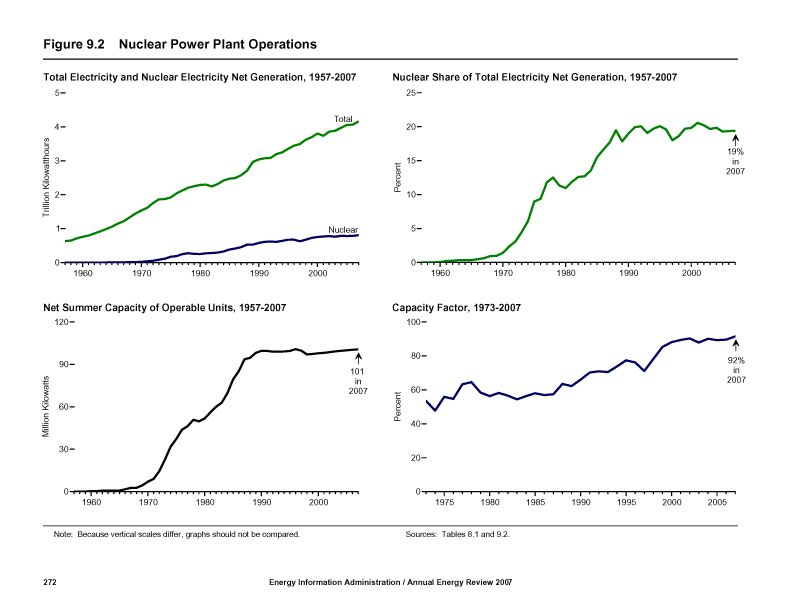The focus on Iran’s nuclear program for its potential development of nuclear weapons obscures somewhat the progressive demand by many countries across the globe to reduce their reliance on fossil fuels by development of nuclear energy capacity. The presence of the majority of fossil fuel deposits in the hands of a very few countries has lead to dangerous reliance on the ability of these countries to maintain and protect a stable supply and meet the increasing demand. The nearly limitless capacity of the atom to supply energy and its reputation as a “cleaner” alternative to carbon due to its low CO2 footprint has made it an increasingly attractive option for energy – except in the United States, the originator of the nuclear plant. The commitment is particularly strong in France, where over 80% of its energy grid needs are met by nuclear plant kilowatt production and less than 10% reliant on fossil fuels.
The United States, once the world leader in nuclear energy science and nuclear energy production, has taken a progressively backward attitude regarding the capability of nuclear energy, and despite multiple economic shocks secondary to unstable supply, has become increasingly reliant on imported fossil fuels. The current number of functioning nuclear power energy plants in the United States is 104, producing as of 2007 806.4 trillion kilowatt -hours of energy to the United States energy grid, or 19.4% of the total energy requirement total (U.S. Bureau of Economic Analysis). Impressive as this may sound, no new permits for construction of nuclear plants have been permitted by the U.S. government since 1970, and no new plants have come on line since the early 1980’s. Additionally, despite holding the world’s forth largest reserves of elemental uranium required for nuclear fuel , the United States supplies only 8% of its current uranium needs and imports the rest from countries like Russia, Australia, and Canada.
How did the pioneer country of nuclear energy become the backwater for nuclear power development? It was pretty much the power of a Hollywood movie. ” The China Syndrome” a 1979 movie suggesting sloppy and devious quality of oversite at an imaginary nuclear power plant resulting in a nuclear accident was released just 12 days before a real nuclear accident occurred with a partial core melt down at Three Mile Island in Pennsylvania. Despite the essentially benign outcome of the Three Mile incident with no permanent long term identified contamination or health risk, the juxtaposition of the two events, one fantasy and one real, sealed in the public consciousness a new found abhorrence of the idea of living with nuclear risk. The consequence was no further plant development and worse no further nuclear energy science support for the next thirty years. The objective focus on nuclear plant risk in the United States has shown the nuclear industry to have maintained by far the safest record in the U.S. industrial world, with only 0.13 industrial accidents per 200,000 worker-hours, over 15 times safer than any other manufacturing process(Reuters 03.27.09). The secondary issue of nuclear waste storage received sufficient histrionic coverage to result in the halting of utilization of Yucca Mountain, Nevada as a nuclear waste repository in 2008, and the United States, unlike France, has not developed a modern nuclear waste re-processing facility that typically can recycle up to 97% of waste into usable fuel.
President Obama finally proposed the re-initiation of modern nuclear plant development for the United States with two proposed permits in 2009 for plants in Georgia, but as of yet with no progress in Congress to move the permits into action. 19 states currently have no nuclear power plants and only 21 states produce at least 20% of their energy grid demand from nuclear power, lead by Illinois with 11 plants and 47% of the power grid supplied. It is well past time that we considered the consequences of our continuing reliance on fossil fuels and our negligence of the the power of the atom and its objective risks, compared to every other source of energy. The rest of the world isn’t going to wait for us to get over our nuclear neuroses.
